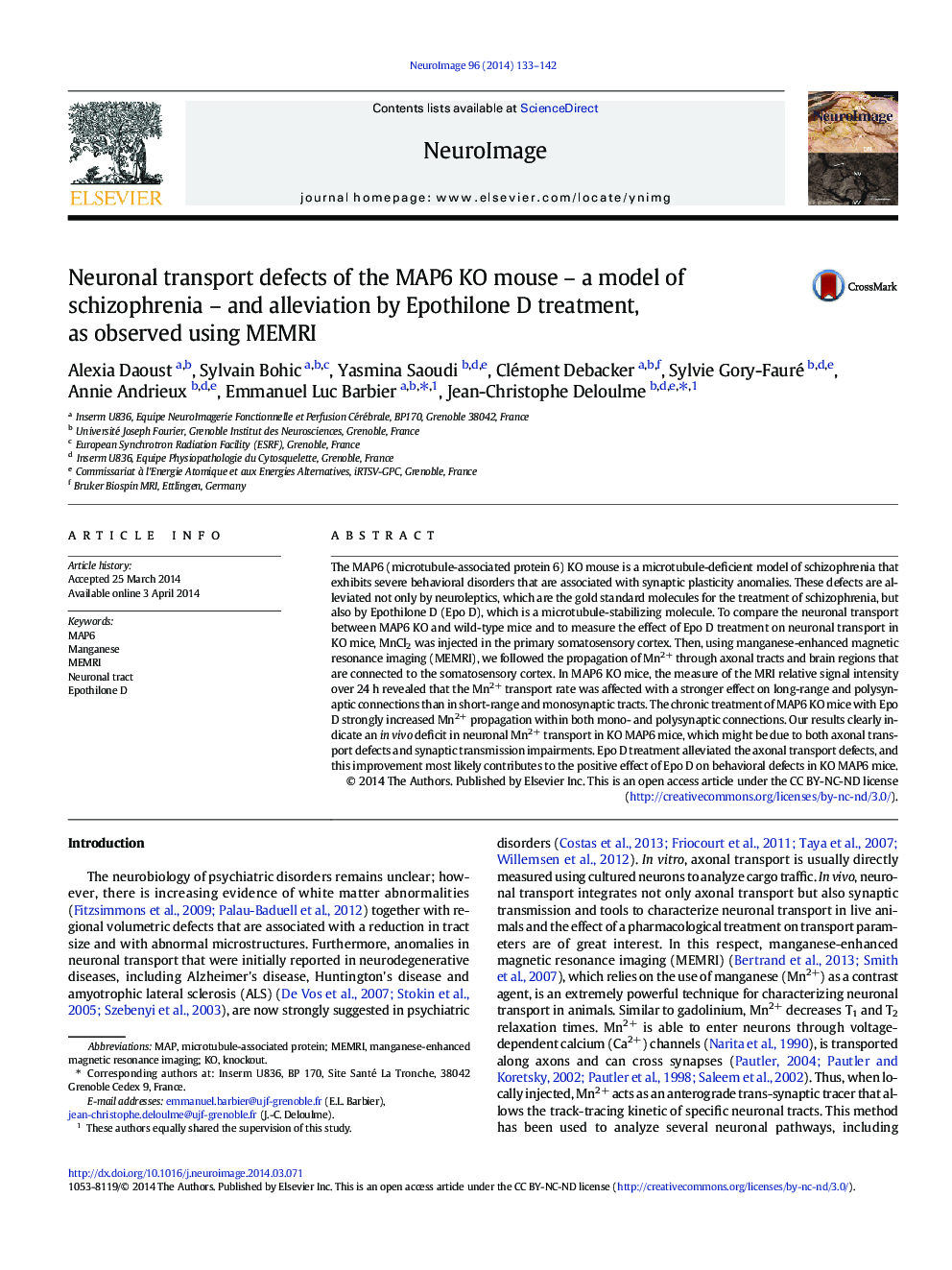| Article ID | Journal | Published Year | Pages | File Type |
|---|---|---|---|---|
| 6027194 | NeuroImage | 2014 | 10 Pages |
â¢The microtubular drug Epothilone D restores normal neuronal transport in MAP6 KO mice.â¢MAP6 knockout mouse, a model of schizophrenia, exhibits altered neuronal transport.â¢Neuronal transport can be directly measured in vivo by MEMRI technique.
The MAP6 (microtubule-associated protein 6) KO mouse is a microtubule-deficient model of schizophrenia that exhibits severe behavioral disorders that are associated with synaptic plasticity anomalies. These defects are alleviated not only by neuroleptics, which are the gold standard molecules for the treatment of schizophrenia, but also by Epothilone D (Epo D), which is a microtubule-stabilizing molecule. To compare the neuronal transport between MAP6 KO and wild-type mice and to measure the effect of Epo D treatment on neuronal transport in KO mice, MnCl2 was injected in the primary somatosensory cortex. Then, using manganese-enhanced magnetic resonance imaging (MEMRI), we followed the propagation of Mn2+ through axonal tracts and brain regions that are connected to the somatosensory cortex. In MAP6 KO mice, the measure of the MRI relative signal intensity over 24Â h revealed that the Mn2+ transport rate was affected with a stronger effect on long-range and polysynaptic connections than in short-range and monosynaptic tracts. The chronic treatment of MAP6 KO mice with Epo D strongly increased Mn2+ propagation within both mono- and polysynaptic connections. Our results clearly indicate an in vivo deficit in neuronal Mn2+ transport in KO MAP6 mice, which might be due to both axonal transport defects and synaptic transmission impairments. Epo D treatment alleviated the axonal transport defects, and this improvement most likely contributes to the positive effect of Epo D on behavioral defects in KO MAP6 mice.
